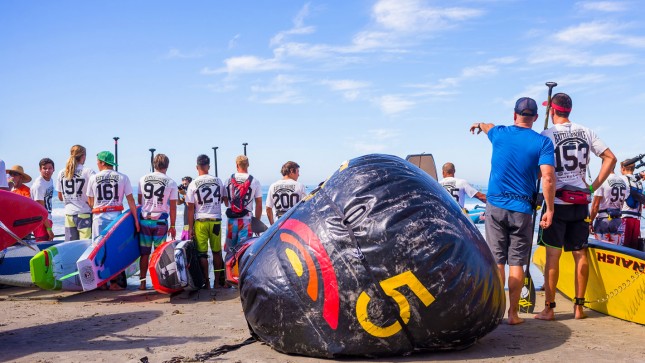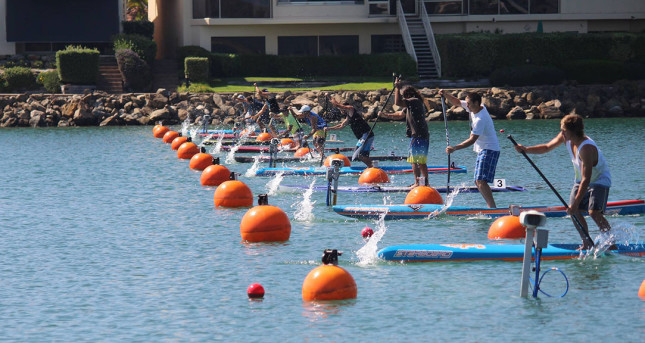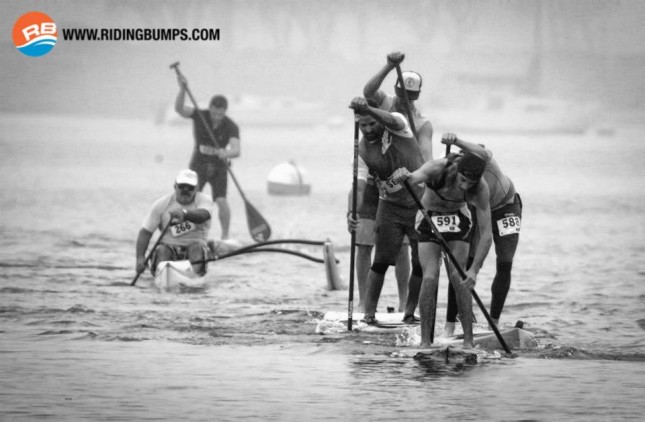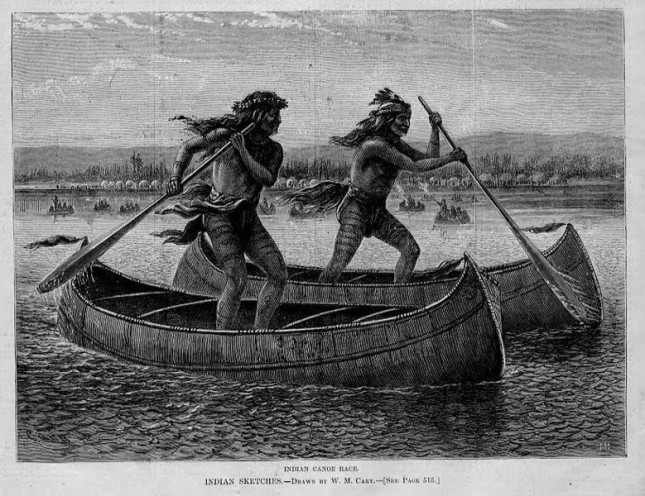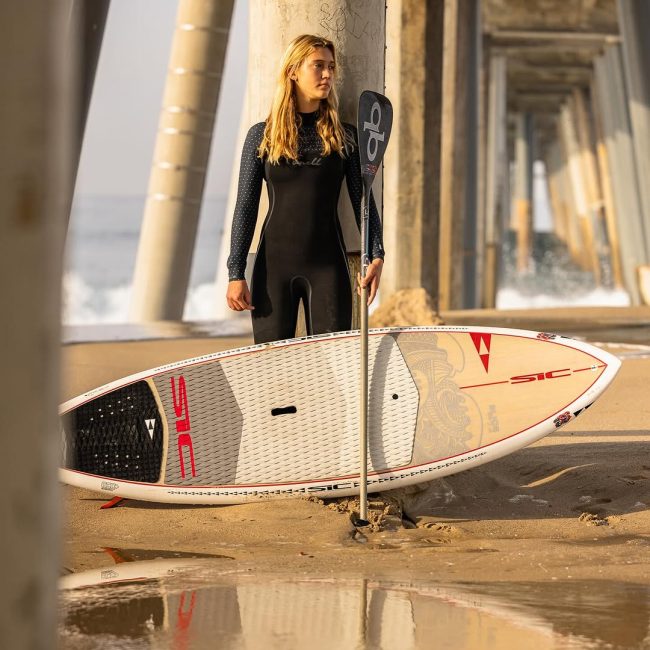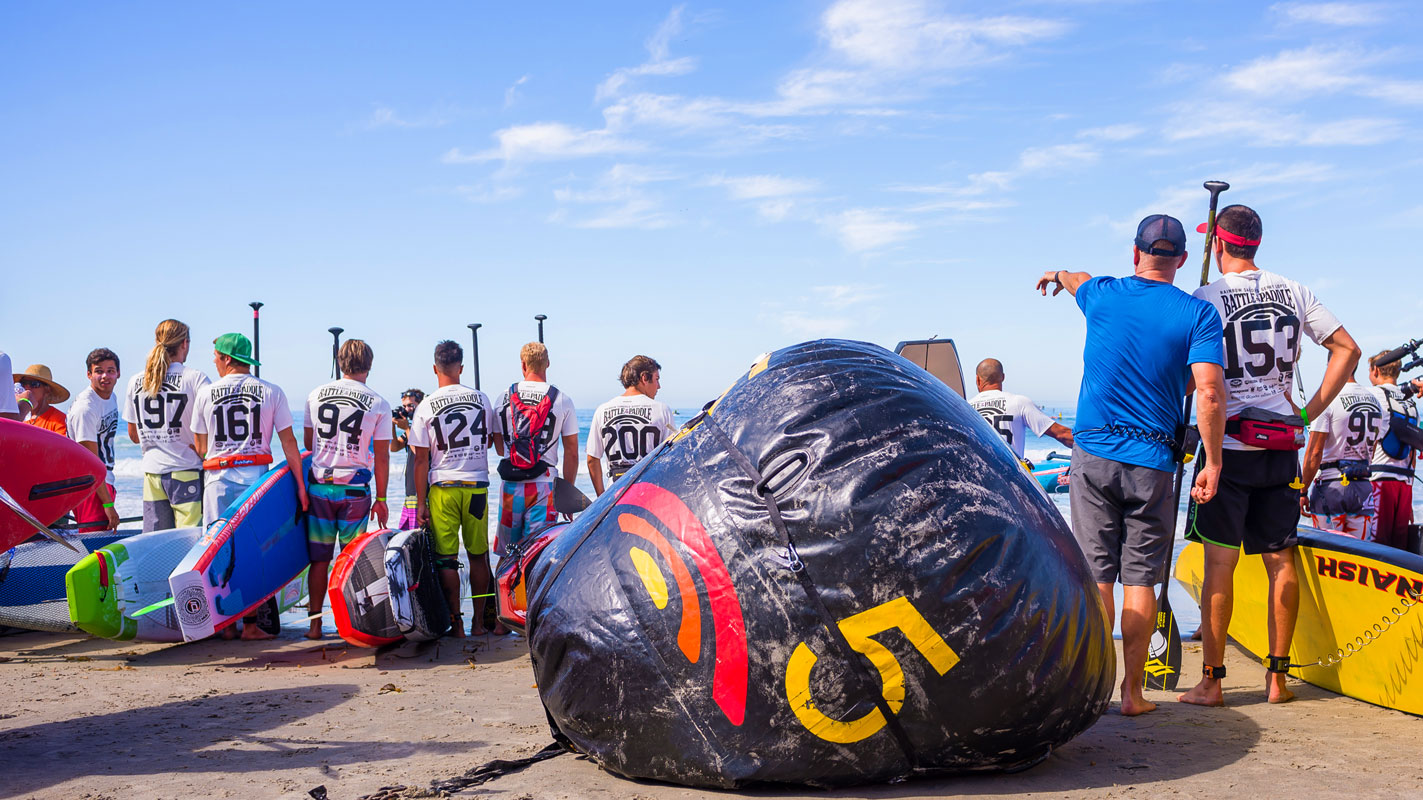
The Board Class Debate Again… Again: Four More Themes For The Future Of SUP Racing
Last week I wrote a guest post about the Board Class Debate, which provided four potential philosophies SUP racing could adopt in the future with respect to any race board regulations. The article certainly created some debate among paddlers across the globe here on the site, on Facebook and the various stand up paddling forums. From these debates, several paddlers proposed many other alternative, novel or innovative solutions to this problem of fragmented board classes.
As a result, I have taken four of the consistent themes that I’ve seen and provided a response as a second part to my discussion: (1) SUP race classes based on weight, (2) Accounting for board specialisation, (3) Class to class handicapping and (4) Governance by traditions.
The Board Class Debate Again… Again
Guest post by Dr. Bryce Dyer
Senior Lecturer and Sports Technology Researcher,
Bournemouth University, U.K.
SUP Race Classes Based On Weight
One suggestion was that we should create classifications based upon paddler bodyweight rather than worrying about a board spec at all. Weight (or rather, mass) is incredibly important in sports that involve both motion and propulsion. A power-to-weight ratio is a key performance indicator in sports such as cycling (it’s been said that any Tour de France champion should be able to hit around 6.7 watts per kilo when ascending a summit climb).
SUP too has similar changes of speed and momentum.
The use of weight to classify athletes isn’t a new concept though. It’s probably most well known in sports such as boxing or wrestling, while Olympic rowing has had this system in place since the 1970s.
There are limitations with weight-based systems though. You need robust data to know where to draw the line between each category. Bear in mind that for those at the sharp end of the results, knowing what weight category you would be in could affect your income, race choice and how you train.
The division of weights across the different SUP race disciplines may compound this problem further. Olympic rowing is only performed on flat-water so this makes the classification boundaries easier to establish. However, SUP uses such diverse conditions and race formats – the impact (or penalty) of mass is less clear-cut and consistent to establish.
Steve West discusses in his excellent book [‘Stand Up Paddle: A Paddler’s Guide‘], how he feels that the most successful paddlers will evolve over time to be lighter than the earlier heavier and stronger paddlers. However, there is no data available about how greater mass might be favourable in some race scenarios (such as getting out through sets of heavy waves) or not in others (turning round a buoy and accelerating).
Even if you do draw the line and, to use the rowing thresholds as an example, the cut-off between the lightweight and heavyweight classifications is defined as 72.5kg for men and 59kg for women. As a result, you could still have two male paddlers in a heavyweight men’s category with the (not unrealistic) weights of 73kg and 90kg – still resulting in one male that is 23% greater in mass than the other.
Therefore, two weight divisions alone will likely not solve this issue if fairness is the aim. However, it could be resolved by creating more weight categories. A good example of multiple category use is at the Paralympic Games whereby they use many classifications to make sure everyone has a fair chance when competing. However, this has been criticised as it makes some classifications too small to be worthwhile, the events require extensive scrutineering and the spectators aren’t always clear what they are watching.
My opinion is that weight classification may well be a viable answer but it would have to accompanied by a single board size. If not, that coupled with the varying ages, genders and board types you would expect, would see SUP racing diluted to such an extent across so many classifications, it would be impractical.
As Larry Cain has said in his article, you just can’t mitigate for everyone.
Accounting For Board Specialisation
Another interesting point raised has been about the apparent benefits of a 14 foot board in one type of racing as opposed to the merits of 12’6 in another.
This asks the question of whether different SUP racing disciplines should be legislated differently?
Again, there are other sports that have been faced with similar decisions. In the late 1980s, Mountain Biking as a sport had enjoyed a similarly fast growth not dissimilar to SUP. Back then, the likes of John Tomac or Juli Furtado used to compete (and win) both cross country and downhill races. However, over time, the equipment evolved and specialised. As a result, different athletes now contest their chosen discipline.
The question here is whether we should foster such specialisation through board regulations or restrict it?
I would suggest that if absolute board length maximums are defined, that still allows both paddlers and manufacturers some licence to experiment with shorter boards in the future if they wish. That fosters innovation but prevents some of the concerns over full unlimited designs that I discussed in my last article. Either way, if the history of other sports is any indication, widespread event specialisation in SUP racing by its athletes is inevitable.
Class To Class Handicapping
There is a suggestion that the factoring or handicapping between both the 12’6 and 14ft classes may be a better method to avoid a board size decision at all. This would mean that any paddler would race their chosen length but their finishing time would then be adjusted in comparison to the time of the other class(es). The advantages of this is that nobody would have to sell their boards; we would all race together and then give both paddlers and manufacturers the freedom of choice to design within an envelope.
Dinghy sailing has used a similar process known as the ‘Portsmouth Yardstick‘ handicapping system successfully since 1947. A related system could work in SUP, be easily applied and would be a low stress implementation for all concerned.
However, the trick would be how this is formulated. Sailing boats are relatively independent from each other and do not have the desire to draft (as a boat would be fed ‘dirty’ wind from the boat in front and therefore be inefficient).
Calculating the Froude Number might be a more robust method to establish such a handicap between board designs. The formula to calculate a Froude Number generates a dimensionless number (a bit like the Mach measurement with aircraft speed) to compare different objects moving through a fluid.
It’s a well cited and reliable method, however it would have a limitation when applied to SUP racing: Two riders of different mass, paddling the same design board could still have a different effective waterline of an inch or so, making the handicap inaccurate.
Either way, with any handicapping system, one category is always going to be favoured in a given condition. All in all, this idea is great in conception but limited in reality.
Governance By Traditions
The last argument is that restriction to boards in any form is unwelcome anyway as it goes against the origins of the sport and its traditions. Board designs, paddling styles and race formats should continue to develop organically as paddlers, manufacturers and event organisers explore the limits of their experiences and desires.
In 1993, Scotsman Graeme Obree redefined bicycle riding by creating a new tuck-based riding style that led to a track cycling World Championship win.
The governing body banned it.
Graeme then created a new ‘superman’ style riding position, won again and then they banned that one too. The Governing Body’s argument was that it was both unsafe and not in the best traditions of the sport.
I openly admit, this is where I have a little bias – my background is in product design and development so I have a tendency to address what a market wants or needs looking forward as opposed to being too anchored by where it’s been in the past
In terms of SUP though, there seems to be a feeling that it should remain attached to its surfing roots. However, a case could equally be made that (as per Steve West’s book) that SUP as an activity predates surfing and is instead closer to what we would recognise as canoeing.
Whichever is true, the sport’s roots are diverse, mixed and unclear, so if we don’t know what its traditional values are, any level of historical ‘anchoring’ may well be inappropriate.
Even if we do base governance on traditions, being respectful is no good if nobody wants to come and play anyway.
For example, the cycling ‘Hour’ World Record was established in the late 1900s and is, in essence, the greatest distance a rider can cover on a bicycle over the period of one hour. The rules governing the bicycle remained relatively static until the 1990s whereby the introduction of composite materials, Obree’s technique innovations and the concerns that technology was going to become more of a factor than the rider, led to a massive clampdown.
The result of this was that the bicycle technology was then severely restricted, and as a result attempts at the Hour Record plummeted to virtually zero. In 2014, they finally relaxed the rules on the bicycle. Two riders went for the record immediately (with several more already publicly announcing their attempts for 2015).
My point here is not to legislate too much based on the past so as to allow a little ‘wiggle room’ to account for the sports development in the future…



